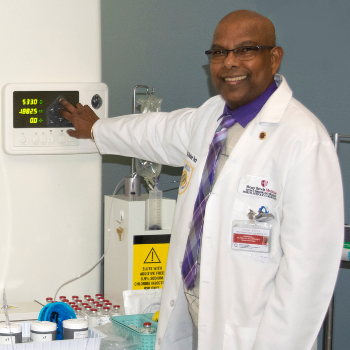Written by Rudy Mahadeo, BS, CNMT, PET, NCT, ARRT (N) (CT)
PET nuclear stress testing, formally known as rubidium-82 (Rb82) PET myocardial perfusion imaging, has become the diagnostic tool of choice in noninvasive cardiac imaging. Imaging is obtained under rest and stress conditions to evaluate regional myocardial blood flow in adult patients with suspected or existing coronary artery disease. The "stress" is achieved with an agent that dilates the arteries of the heart.
Rb82 is an imaging isotope with a half-life of 75 seconds. The benefits of this isotope over other isotope-imaging modalities are numerous. It allows for higher image quality with quoted improvements in resolution of 3-4X. In turn, this yields greater diagnostic accuracy of 96% vs. 81% over the next best nuclear imaging modality. Also, there is a dramatic reduction in the radiation burden of 70-80%, which improves the patient's safety. The scan time is significantly shorter, approximately 30 minutes compared to its competition of 3 hours. Finally, the ventricular function is assessed at rest and peak stress to evaluate cardiac performance.
At North Suffolk Cardiology, we want our patients' experience to be seamless. All of our patients receive pretesting instructions, which are thorough and given when the appointment is made. Twenty-four hours before testing, a clinical staff member reaches out to confirm the appointment, review the test and answer any questions. We ask that the patient arrive 15 minutes before their scheduled appointment; at this time, we verify patient identity and review the test.
During the PET nuclear test, the patient is placed under the camera and rest imaging is taken, followed by administering the stressing agent and stress imaging. Should the patient experience any side effects, a reversal agent will be given.
PET nuclear testing will only improve the patient experience. It gives astounding image quality and excellent clinical data. These provide a higher overall accuracy leading to better physician interpretation. In turn, this leads to a better patient prognosis.
A healthy patient is a happy patient.


